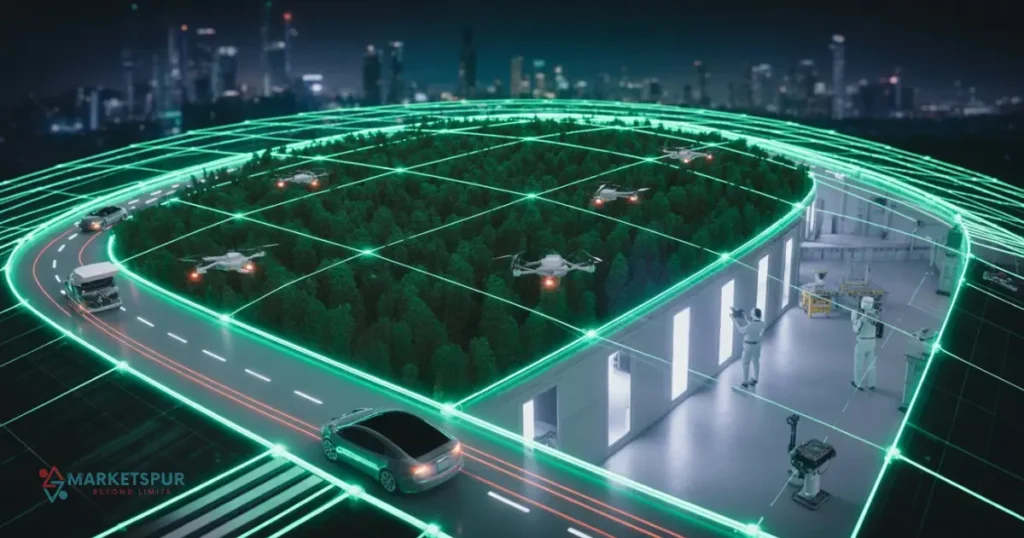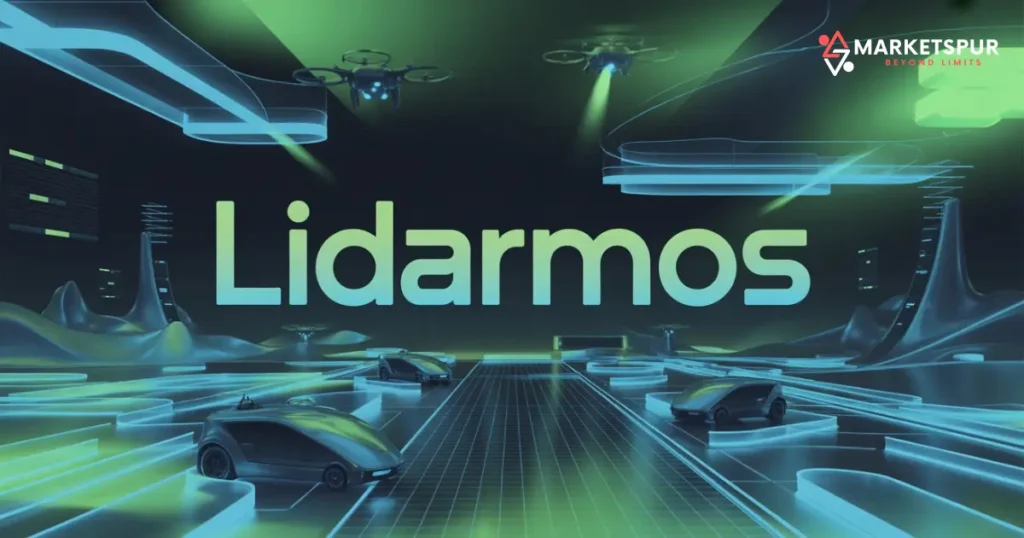Introduction — Understanding the Concept of Lidarmos
In today’s rapidly evolving tech world, Lidarmos is emerging as the next big breakthrough in spatial sensing and LiDAR motion system innovation. By merging light detection with motion analytics, it transforms how machines interpret movement, distance, and environment in real time.
Unlike traditional LiDAR that only scans surroundings, Lidarmos understands how objects behave dynamically — making it a cornerstone for autonomous vehicles, robotics, and smart infrastructure across the United States. As industries move toward automation and intelligent mapping, Lidarmos is redefining precision, adaptability, and efficiency in next-generation LiDAR technology, paving the way for a smarter, motion-aware future.
- Introduction — Understanding the Concept of Lidarmos
- What is Lidarmos and How Does It Work?
- The Evolution of LiDAR Technology Leading to Lidarmos
- Core Components and Working Mechanism of Lidarmos
- Key Features and Technical Advantages of Lidarmos
- Real-World Applications of Lidarmos Across Industries
- Benefits of Using Lidarmos for Businesses and Researchers
- Limitations and Challenges of Lidarmos Technology
- Comparing Lidarmos with Traditional Surveying and Mapping Methods
- Integration of AI and IoT — Making Lidarmos Even Smarter
- Case Studies and Real-Life Implementations of Lidarmos
- Future Potential and Emerging Innovations in Lidarmos
- Common Questions About Lidarmos (FAQ Section)
- Conclusion — The Road Ahead for LiDAR and Motion Analytics
What is Lidarmos and How Does It Work?
Lidarmos (LiDAR Motion System or LiDAR MOS) integrates laser-based detection with motion-tracking sensors. It sends out laser pulses to measure distance while synchronizing with motion sensors to track speed, direction, and acceleration. This fusion allows for an ultra-accurate 3D model of moving environments.
In simple terms, while LiDAR “sees,” Lidarmos both “sees and understands motion.” A visual diagram of its sensor data flow would show laser emitters, detectors, and motion units all working together for synchronized data fusion.
The Evolution of LiDAR Technology Leading to Lidarmos
From early mechanical LiDAR to today’s solid-state sensors, the technology has advanced dramatically. Yet, motion awareness was the missing piece — until now. Lidarmos evolved through breakthroughs in MEMS sensors, edge computing, and AI algorithms, making it smarter and faster than ever.
| Generation | Key Innovation | Limitation | Advancement to Lidarmos |
|---|---|---|---|
| LiDAR 1.0 | Basic laser scanning | Slow data rate | Multi-sensor integration |
| LiDAR 2.0 | Solid-state LiDAR | Motion blur | Real-time fusion |
| Lidarmos | Motion-aware LiDAR | – | Predictive analytics & AI processing |
Core Components and Working Mechanism of Lidarmos
At its core, Lidarmos consists of laser emitters, photodetectors, IMUs (Inertial Measurement Units), and microprocessors that work in sync. Its fusion software processes laser and motion data simultaneously, predicting object movement even before it happens.
AI algorithms refine sensor readings in real-time, while IoT connectivity allows Lidarmos devices to share insights instantly across networks — an essential feature for smart cities and connected vehicles.

Key Features and Technical Advantages of Lidarmos
Lidarmos outperforms standard LiDAR through higher resolution, 360° dynamic sensing, and reduced latency. It delivers a sharper, more stable spatial view even in motion-heavy conditions.
| Feature | Traditional LiDAR | Lidarmos (LiDAR MOS) |
|---|---|---|
| Detection Range | 150m | 300m+ |
| Frame Rate | 10 fps | >60 fps |
| Motion Tracking | No | Yes |
| AI Integration | Limited | Full |
Its energy efficiency and adaptability to edge AI systems make it an ideal solution for large-scale operations.
Real-World Applications of Lidarmos Across Industries
In the U.S., Lidarmos is already shaping multiple industries — from autonomous vehicles to aerospace, robotics, agriculture, and logistics. For instance, self-driving fleets use it for real-time environment mapping, while drones employ it for precision inspection.
It’s also crucial for smart traffic management, disaster response, and urban infrastructure analysis, providing a live 3D model of movement patterns across vast environments.
Benefits of Using Lidarmos for Businesses and Researchers
Businesses using Lidarmos enjoy faster data acquisition, improved decision accuracy, and reduced field errors. Researchers, meanwhile, benefit from cleaner datasets and advanced modeling potential.
From urban planning to environmental studies, Lidarmos delivers insights that were once impossible with static scanning systems. It’s reshaping how experts approach spatial problem-solving and predictive analytics.
Limitations and Challenges of Lidarmos Technology
Despite its potential, Lidarmos faces challenges. The cost of setup remains high, data output is immense, and system calibration can be complex. Environmental factors like fog, dust, or heavy rain can affect precision.
Regulatory and privacy concerns in the U.S. — especially in public surveillance or drone mapping — also pose hurdles. Yet, ongoing R&D aims to create smaller, cost-efficient units with smarter self-calibration.
Comparing Lidarmos with Traditional Surveying and Mapping Methods
| Technology | Accuracy | Data Speed | Cost | Motion Support |
|---|---|---|---|---|
| GPS Mapping | Low | Medium | Low | No |
| Photogrammetry | Medium | Slow | Medium | No |
| LiDAR | High | Fast | High | Partial |
| Lidarmos | Very High | Real-Time | Moderate | Full |
Unlike traditional surveying tools, Lidarmos not only captures static landscapes but also interprets how objects move — a key advantage for autonomous systems and smart monitoring.
Integration of AI and IoT — Making Lidarmos Even Smarter
By integrating AI and IoT, Lidarmos becomes a learning, adaptive system. AI algorithms predict object trajectories and identify patterns, while IoT connectivity ensures instant cloud synchronization and system-wide intelligence.
From smart warehouses to autonomous traffic systems, this fusion of technologies turns static data into live operational insights that improve safety and efficiency.
Case Studies and Real-Life Implementations of Lidarmos
Several U.S.-based companies and research labs are testing Lidarmos prototypes. Autonomous warehouse robots, for example, now navigate complex environments with 95% fewer collisions thanks to motion-aware mapping.
In transportation, cities like Austin and San Francisco are exploring Lidarmos for real-time traffic flow optimization.
| Project | Industry | Result |
|---|---|---|
| Autonomous Warehouse Robots | Robotics | 95% collision reduction |
| Smart Traffic Management | Urban Tech | 40% improved flow |
| Drone Inspection | Infrastructure | 2x data accuracy |
Future Potential and Emerging Innovations in Lidarmos
The future of Lidarmos lies in pairing it with 5G, quantum sensors, and edge AI processors. These advancements will enhance real-time communication and predictive mapping.
Soon, AR/VR environments, metaverse mapping, and autonomous air mobility could all rely on Lidarmos. Its role in the green tech ecosystem — using energy-efficient scanning and recyclable components — further cements its place in sustainable innovation.
Common Questions About Lidarmos (FAQ Section)
1. What makes Lidarmos different from LiDAR?
Lidarmos merges LiDAR with motion analytics, offering both spatial and kinetic intelligence.
2. Can Lidarmos be used in autonomous vehicles?
Yes, it enhances real-time awareness, predicting object motion and improving vehicle response.
3. How accurate is Lidarmos motion detection?
It achieves near-millisecond precision with over 99% mapping reliability.
4. What industries benefit the most?
Transportation, robotics, defense, and urban planning all gain major advantages.
5. When will Lidarmos become mainstream?
With rapid adoption in the U.S., mainstream integration is expected within the next 3–5 years.
Conclusion — The Road Ahead for LiDAR and Motion Analytics
Lidarmos is not just an upgrade — it’s a complete evolution. By combining LiDAR and motion sensing, it unlocks a new era of intelligent perception. From autonomous driving to environmental analytics, it’s redefining how the modern world understands space and movement.
As industries shift toward automation and real-time insight, Lidarmos stands ready to lead the revolution — shaping the next chapter in LiDAR and motion analytics for decades to come.

